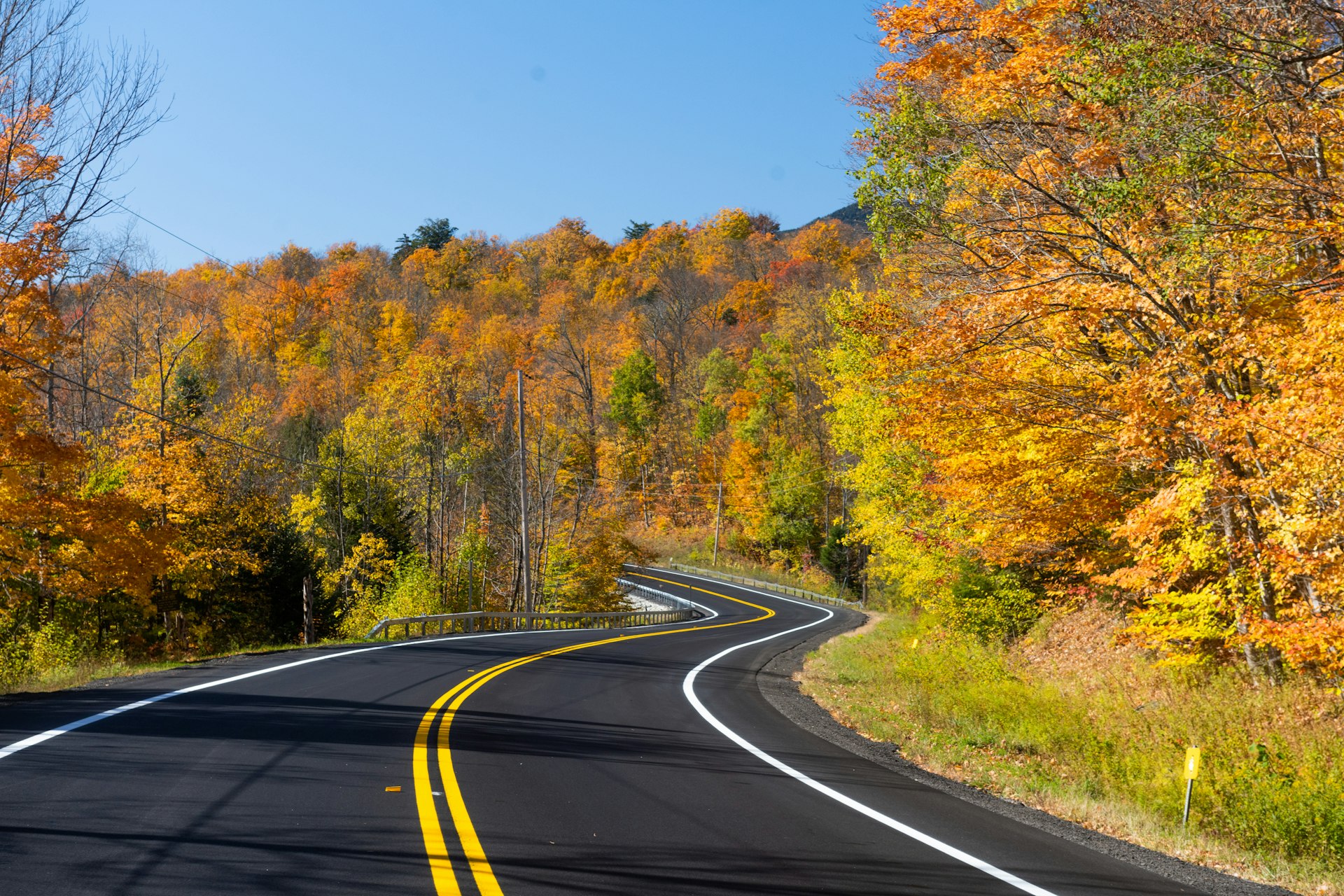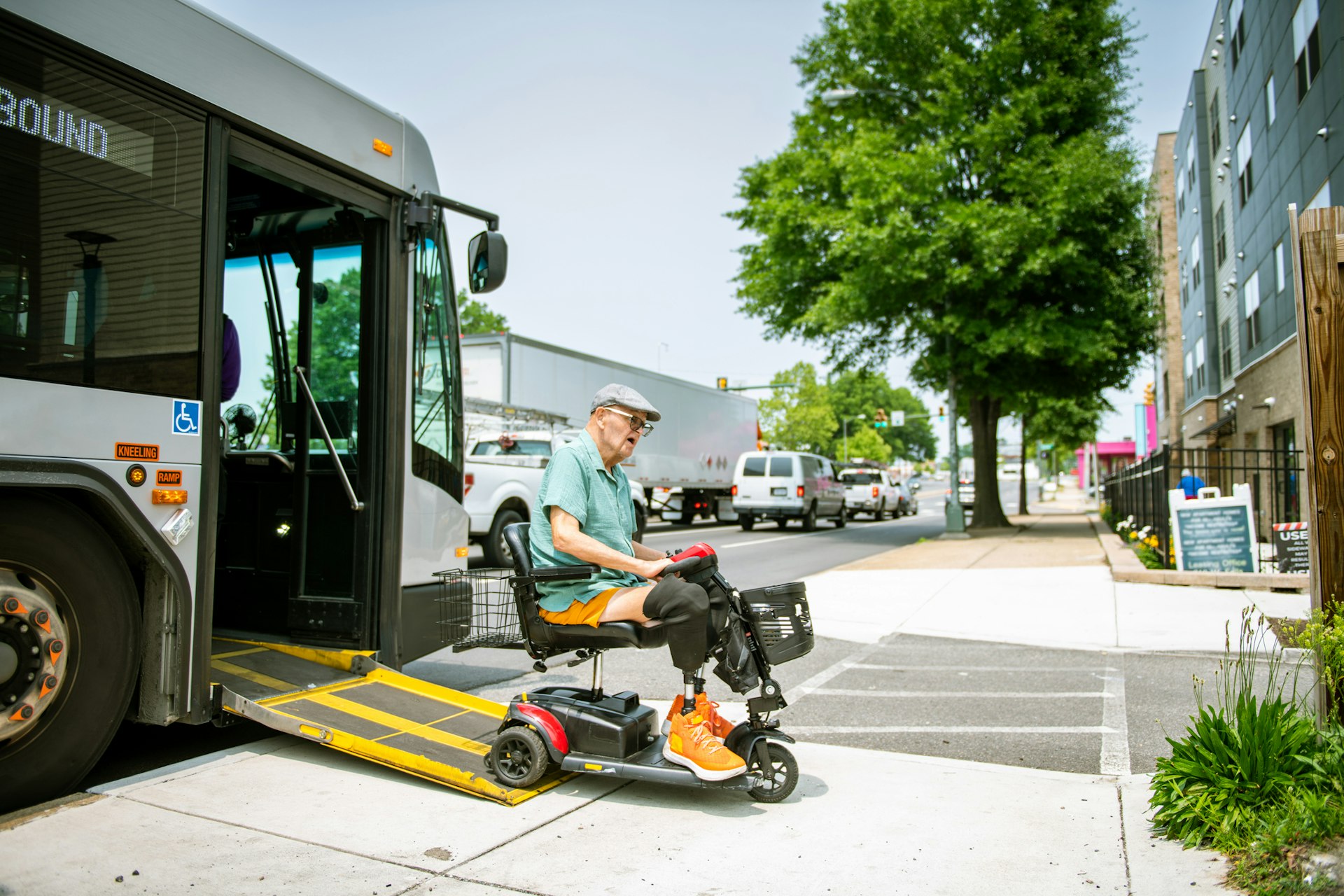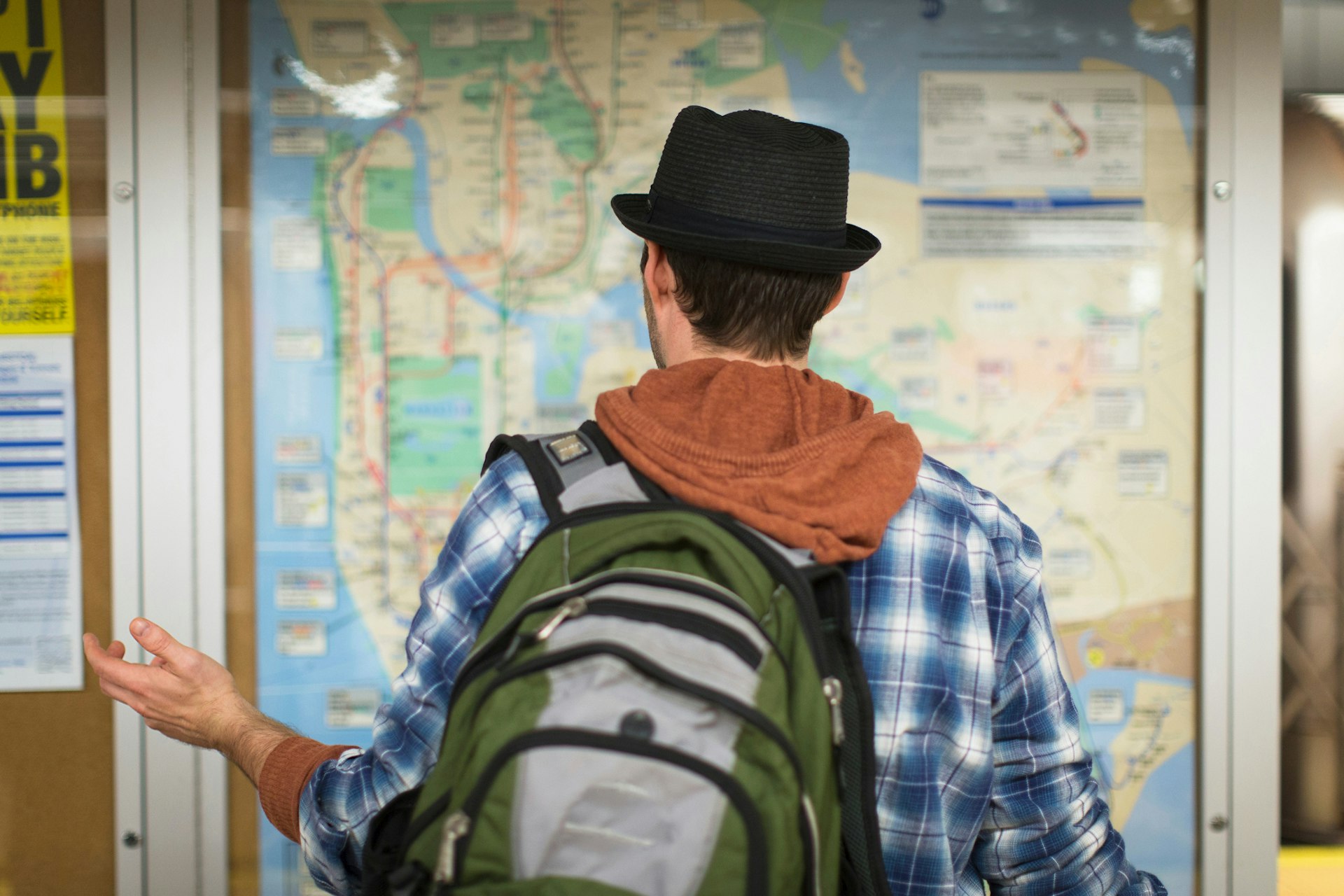Yes, NYC can easily monopolize all of your vacation time but don’t sleep on the incredible landscapes that await you in New York State – we’ve got all the info you need on how to get there and around.
There are many options for exploring the cities, beaches and beautiful landscapes of New York State: trains to the easternmost point of Long Island; buses through the Adirondacks and the Finger Lakes; flights to Syracuse and Niagara Falls; and more.
No matter how you get around New York State, one thing is certain – the path you take will be stunning in any month, with fall foliage, snowy mountains, green spring landscapes and summer lushness delighting travelers throughout the year.
Here are the best ways to get around New York State.
Take in New York State’s varied scenery along the rails
Outside of urban subway tunnels, New York State’s beauty looks glorious through the window of a train carriage.
How to get to Long Island by train
New York’s Metropolitan Transportation Authority (MTA) runs New York City’s subway as well as two commuter-rail networks stretching well beyond the city limits. For all points east, hop on the Long Island Rail Road, universally called the LIRR.
From its Manhattan hub of Penn Station, 947 daily trains snake out across 700 miles of track along 11 lines covering almost all of Long Island. The longest LIRR line terminates at Montauk, the easternmost point of Long Island – and of the state – some 120 miles from the city.
How to get to Westchester, the Hudson Valley and Rockland County by train
The MTA also runs the Metro-North Railroad, which takes passengers north of the city from the majestic Grand Central Terminal (itself worthy of a visit).
Three lines branch out from there: the Harlem line crawls up through Westchester and up to Dutchess County; Hudson line trains follow a stunning riverside track in the Hudson Valley up to Poughkeepsie; while the New Haven line snakes east as far as New Haven, Connecticut. Two additional lines cross New Jersey and cross the state line into Rockland County, on the west side of the Hudson.
For both the LIRR and Metro-North, fares are based on peak (NYC-bound trains from 6–10am; outbound trains from 4–8pm) and off-peak (all other times) travel times as well as distance. While you can buy tickets from machines at all stations, there are frequent waits to use these.
We recommend downloading the MTA’s TrainTime app to save time as well as paper. Conductors roam the trains to check tickets both printed and digital.
How to get to Albany, Syracuse, Rochester and Niagara Falls by train
If you’re heading to areas further out, Amtrak goes the distance. Its north-south line stretches from New York City to just shy of the Canadian border, while an east-west line connects Albany with Niagara Falls.
As with all Amtrak tickets, the earlier you buy, the better chance you have for lower fares; be aware that some last-minute fares can cost more than a plane ticket. While seats are unreserved in coach class, don’t board without a ticket unless you’re prepared to pay a fine to the conductor.
Both Amtrak and Metro-North serve the Hudson Valley, though fares on the Metro-North are lower. Expect a leisurely pace compared to driving – though slowly rolling through the countryside is one of the great pleasures of train travel through New York State (or anywhere).
Hopping on the bus is a budget-friendly option
Many bus companies connect cities and towns throughout New York State.
As part of its extensive national network, Greyhound has about 60 stations in the state, serving such visitor-friendly places as Buffalo, Cooperstown (a must for baseball fans), Ithaca, Lake Placid and Saratoga Springs. Each coach has free wi-fi, power outlets and extra legroom.
A low-cost Greyhound competitor, Megabus, offers extremely cheap rides – as low as $1 if you book early – across the state. Trailways also has an extensive New York State network, serving smaller towns than the larger lines, especially in the Catskills.
For those heading out to the Hamptons, the famous Hampton Jitney picks up passengers at several stops in Manhattan and Brooklyn, whisking them to both the North and South Forks of Long Island’s East End.
Be sure to research just where the bus will drop you and have a plan to get from there to your final destination, especially in smaller towns where onward taxis might need to be reserved in advance.
Save time by catching a flight across the state
New York State is bigger than you might think. If you need to get between New York City and an upstate city in a hurry, a flight to or from LaGuardia, Kennedy or Newark Airports might be the best option, even though they’re not the most environmentally friendly choice.
From its hub at Newark, United offers nonstop flights to Ithaca in the Finger Lakes; Buffalo, Rochester and Syracuse in the western part of the state; and even Albany, a short hop up the Hudson.
JetBlue, meanwhile, serves Buffalo, Rochester and Syracuse from JFK; Delta also serves multiple New York State destinations from LaGuardia and JFK. With connections, you can also fly to smaller cities like Elmira, Plattsburgh (gateway to the Adirondacks) or Watertown (close to the Thousand Islands).

Take a New York State road trip
Do you need a car to get around New York State? Not necessarily – but it helps. Since so much of New York’s natural beauty is in its mountains, forests, lakes, rivers and waterfalls, having your own car may be the most practical way to get around.
Major car-rental brands have locations in cities throughout the state, usually both at the airport and closer to the city center. You might also consider Turo, an Airbnb-like service for cars that allows you to rent someone else’s vehicle, with many hosts delivering the car to your location.
New York State requires car-rental companies to rent to any licensed driver 18 years and older, though you should expect a surcharge if you’re under 25. Credit cards are not required to rent a car.
Ride-sharing services and taxis will depend on where you are and local demand. In some more remote places, it might be better to call a local cab service.
Tip for driving in New York State: The New York State Thruway is a multilane freeway that crosses the entire state, following the Hudson north to Albany before heading west to the Pennsylvania border.
It’s a toll road for its entire 500-mile length, with all fees cashless. Be sure to rent a vehicle with an E-ZPass transponder to pay all applicable tolls without exorbitant surcharges from your rental car company.

Accessible transportation in New York State
While the state of New York has varying requirements for public transportation entities to provide accessible options, most train, plane and bus services between cities can usually accommodate most mobility issues.
Still, if you’re heading further out from a major city, we recommend checking ahead of time to ensure local transportation providers can cater to travelers with accessibility needs.
